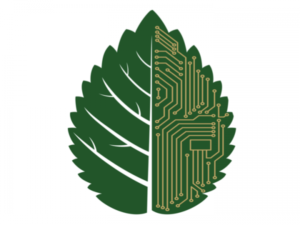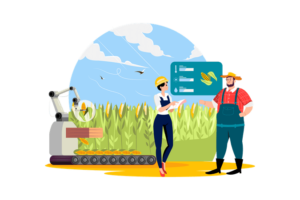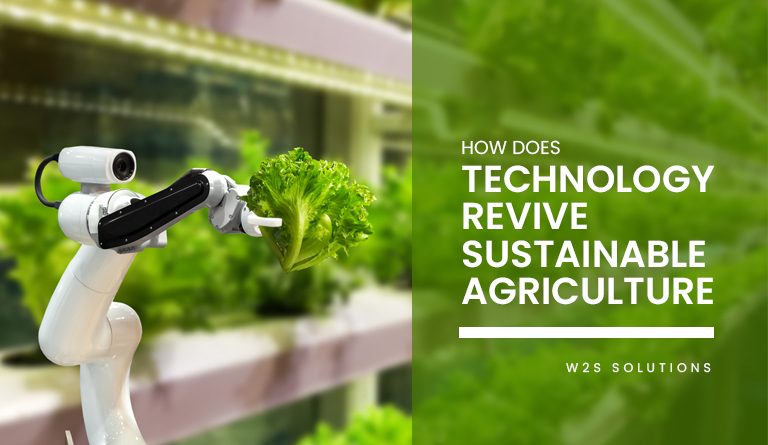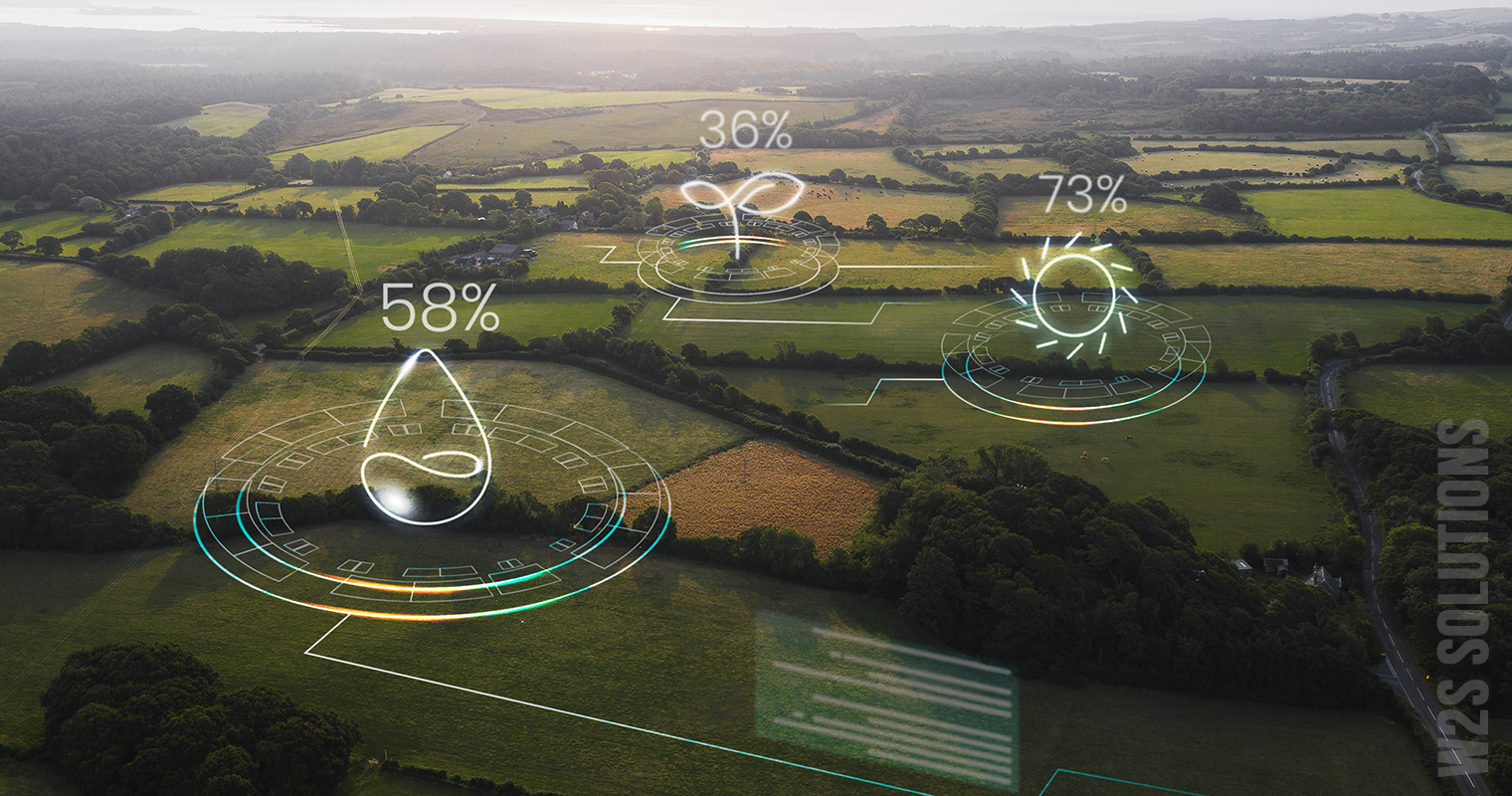Overview: Every industry has started to take initiatives to achieve sustainable agriculture and fulfill the needs of future generations without compromising food and other natural resources. Public and private sectors are in the urge to bring more changes for the good of land, soil, and crops to cherish farmers’ lives. People can start adopting green practices now and promote the methods for future generations later to maintain sustainability. Following the culture and good practices for a better tomorrow needs to start now.
Agriculture has an important role in today’s society and contributes significantly to the environment. The rise of agriculture has resulted in environmental degradation in transportation, food consumption, and production since carbon levels are high, and agriculture produces more fossil fuels, which impact the atmosphere. The use of green technology or smart farming solutions for agriculture has increased to make the environment more sustainable. According to a study, the global green technology and sustainability market is expected to grow at a CAGR of 20.6% between 2022 and 2029, from $13.76 billion to $51.09 billion.
The agricultural sector can be improved by leveraging technology to achieve SDG and benefit farmers and businesses by making sustainable decisions and achieving better agricultural yields. The agricultural sector has started to adopt green technologies like organic agriculture, drone fleet management, digital sensors, agricultural robots, irrigation, zero tillage, integrated pest management and renewable energy to protect the environment. According to a study, the market for drones in smart agriculture will grow from $1.2 billion in 2019 to $4.8 billion in 2024.
What is Green Technology?

Green technology mainly focuses on preventing the environment from the negative impacts of humans. Green technology holds more benefits because it assists in sustainable agricultural development, reduces environmental damage, and produces low-fossil fuel, which acts as a by-product. Adopting green technology from a software development company in Texas will benefit humans and their environment and direct future generations in the right way to implement sustainable agriculture techniques.
How can businesses achieve sustainable agriculture with green technologies?

-
Biotechnology:
Biotechnology plays a major role in modifying the crop’s DNA in ways that don’t happen naturally. The plants are created with the best approaches from data science consulting companies to benefit humans and fight climate change, which is a powerful technique. Biotechnology has helped combat climate change by using high-yielding crops and genetically changing their stress tolerance. The maintenance of crops needs to be plowed less frequently and requires fewer pesticides. Compared to regular crops, modified crops have been shown to reduce greenhouse gas emissions.
-
Drones:
Green technologies like drones have been adopted by the agricultural sector to achieve sustainability, precision farming, and reduce the impacts of climate change. Drones have started to help farmers improve their work more efficiently. After acquiring this drone solution, the technology and government helped farmers by using it for examining crops, livestock management, capturing aerial imagery, irrigation mapping, and crop spraying.
-
Integrated Pest Management:
Integrated Pest Management (IPM) helps farmers use natural pest control mechanisms since it is considered the best approach in the modern world. This method, followed by farmers, will result in their healthy growing crops and not cause any disruption in the environment. It gradually reduces the use of synthetic pesticides and the toxic footprint of farmland. IPM is considered the best green technology for farmers to keep their land healthy and productive.
-
Irrigation Monitoring:
Irrigation monitoring has helped farmers monitor the supply of water to crops since the absence of enough water will not allow the crop to produce a healthy yield. The earth’s water supply is limited, so saving water will keep the environment healthy. Farmers can control the operations of their water supply with the use of wireless and remote monitoring systems. It is important to have more concern over water usage and distribution since it is very helpful in huge farms for monitoring purposes.
-
Organic Farming:
Organic farming methods and solutions obtained from a digital transformation company are environmentally beneficial. Most businesses and farmers prefer them since they improve soil and human health. Organic food is obtained only when higher quality soils are produced for crop production, reducing the use of pesticides and fertilizers. Crop rotations and manure in organic farming have helped farmers control diseases, weeds, and pests. Organic agriculture promotes incredible biodiversity and uses less energy.
-
Renewable Energy:
Renewable energy is a natural resource that helps farmers achieve sustainable agriculture. The majority of agricultural machinery uses fossil fuels, which contributes to climate change and influences the environment by generating carbon emissions. Businesses and farmers can mitigate this environmental damage by using green technology solutions and renewable energy sources. Agriculture and renewable energy are a great combination that helps individuals harvest these resources forever.
The most commonly used renewable energy sources in agriculture include:
#1 Biomass:
Biological organisms such as animal and plant waste are referred to as biomass, and this material is converted to generate energy by the burning process. The outcome is used for drying crops, dairy operations, generating electricity, heating buildings and producing steam.
#2 Solar:
The agricultural sector requires solar energy to convert solar light radiation into electrical energy. The electricity generated from the sun allows farmers to have access to water pumps, run farm machinery and lighting for crops.
#3 Solar Thermal:
It is also a green technology widely preferred by farmers and businesses to convert solar energy into heat energy for common uses like solar greenhouses, water heating, and underground soil heating.
#4 Wind:
Wind turbines are an excellent choice for farmers to pump water for irrigation.
-
Vertical Farming:
Vertical farming is considered the best method in green technology since it allows farmers to grow crops in vertically stacked layers by avoiding the traditional farming method. The tech solutions for farmers benefit from this strategy because they can produce more crops on the same land. This method is also considered a sustainable farming method that provides businesses with economic, social, and environmental benefits. Farmers can achieve an increased yield, reduced fertilizer wastage, and reduced water. The crops are grown in a controlled climate since diseases and pests are minimal, resulting in less use of fertilizers and pesticides. If local crop production and harvesting are considered, it significantly impacts reducing the carbon footprint and travel costs.
Read Also – How much does the world spend on Sustainable Development Goals?
-
Zero Tillage:
Zero tillage is the main reason for improving the rate of soil carbon sequestration or the amount of carbon the soil absorbs and stores. The zero-tillage or no-till farming method helps farmers eliminate heavy farm machinery and the need to plough the soil. The use of traditional methods without disturbing the soil will release fewer greenhouse gasses from the ground because there will be less soil erosion. This method also uses crop residue left on the soil surface from the previous crop. It also reduces the number of greenhouse gasses released into the atmosphere while saving farmers’ income.
How are emerging technologies used in the agriculture sector?

-
Artificial Intelligence (AI):
Drones equipped with AI and intelligent sensors provide visual data streams that benefit from detecting the most pest-infested areas. The collected data allows farmers to use the right mix of pesticides to treat the infected areas alone. AI in agriculture is used to conserve water by helping farmers measure the effectiveness of crop irrigation approaches, optimize irrigation systems, and locate irrigation leaks. The AI solution is capable enough to measure the amount of water needed for a crop field and achieve the desired yield level.
Read Also – How leveraging Artificial Intelligence could help in achieving Sustainable Development Goals?
-
Big Data:
Big data helps businesses and farmers by providing granular data on water cycles, fertilizer requirements, and rainfall patterns. The big data analytics companies will allow them to make better decisions with collected data on planting good crops and the perfect time to harvest, which will result in increased farm yields. Big data solutions also help farmers identify the pest affected areas from the collected data and provide the best pesticides to keep the crops and soil healthy. Different types of big data analytics solutions in farming equipment have benefited businesses by managing their fleet better, tracking and optimizing delivery truck routes, and providing information about tractor availability, fuel refill alerts, and service due dates.
-
Cloud Computing:
Cloud computing solutions will assist businesses and farmers in gathering information about all previous crops grown to make better decisions about increasing better yields in the future and generating more income. Cloud computing in agriculture will benefit farmers by allowing them to draw weather information and forecasts to understand the weather better and make decisions to grow crops. Cloud computing is also used to check the soil’s acidic and alkaline levels, monitor the growth of crops in specific regions, and study local farmers’ involvement to provide them with the best strategies.
-
Internet of Things (IoT):
IoT solutions for the agricultural sector have helped farmers overcome the supply-demand gap by protecting the environment and ensuring profitability and high yields in the long run. IoT technology will benefit farmers from improved productivity, reduced waste, and better utilization of resources such as electricity and water. With the help of sensors, IoT has helped farmers monitor their crop fields to automate the irrigation system and manage soil moisture, humidity, crop health, light, and soil temperature. IoT is highly efficient and performs better than traditional methods. IoT applications are also used for livestock tracking and geofencing to collect data from their cattle and take proper measures. Drones in wildlife monitoring with IoT sensors to study, protect and take counts of animals and birds.
-
5G:
5G solutions are incredible in speed and help farmers instantly transfer and receive data related to farming. Farmers can make quick decisions with 5G technology to better the growth of crops after receiving real-time data. 5G ensures that we effectively bridge the gap in data availability, data transfer, and performance to manage the crops grown on land. Hiring the best SDG solution provider will assist in 5G connectivity for effective irrigation and allow farmers to reap good quality crops based on collecting specific data about soil patterns, content, moisture, and water salinity.
Read Also – How technology can fast-track the global Sustainable Development goals?
Wrapping Up:
A variety of issues affect farmers and their lands, limiting their ability to protect their farms and achieve sustainability. The future is all about keeping the earth a sustainable place, and to achieve this, emissions being released from agriculture are also a cause affecting the atmosphere. So, it’s important to adopt green technologies and other emerging technologies to take the agricultural sector to the next level. These advanced technologies are a one-stop solution for businesses and farmers to bring about change quickly and improve their farm yields. Enterprises can get in touch with top sustainability consulting firms to help farmers opt for greener operations and instill the core principles of sustainability.




